Josh Kilmer-Purcell's Blog, page 10
April 5, 2018
Beekman 1802 Almanac Now In Libraries
Are you a librarian or a frequent patron? Next time you are at the library, let them know that they can now get the Beekman 1802 Almanac through WT Cox—the same service from which they order all of their other periodicals! Help cultivate a better community.
Thanks for helping us spread the word!
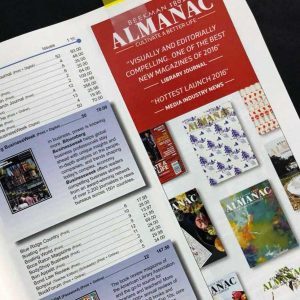

1
Spring 2017 Almanac

2
Summer 2017 Almanac

3
Autumn 2017 Almanac

4
Winter 2017 Almanac
Visit the Mercantile
The post Beekman 1802 Almanac Now In Libraries appeared first on Beekman 1802.
April 2, 2018
18(02) Facts about Ramps
Spring has sprung and that means that ramp season is in full swing. You know, ramps: those cute, terribly en vogue little vegetables with the slightly unappealing name that appear on every hip restaurateur’s menu, and whose very presence has been known to strike panic in the hearts of its foragers due to its hyper-seasonal existence.
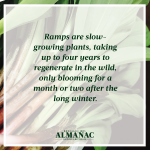

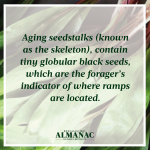
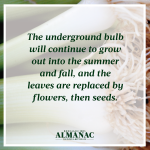

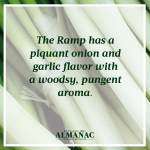
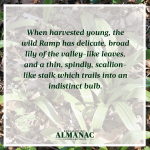




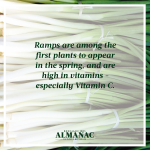


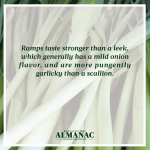
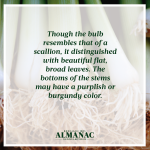
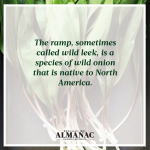
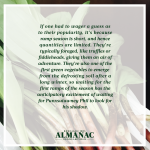
The post 18(02) Facts about Ramps appeared first on Beekman 1802.
The Joy of Less
To get ready for spring cleaning we asked organization expert Francine Jay, founder of Miss Minimalist, for a little help.
What is the biggest misconception of minimalist living?
First, let’s pull this term “minimalism” down to earth. It seems to have acquired a somewhat intimidating, elitist air, as it’s often associated with chic, multimillion-dollar lofts with three pieces of furniture. The word conjures up images of spare, cool interiors, concrete floors, and gleaming white surfaces. It all sounds very sober, serious, and sterile. What role could it possibly play in lives filled with kids, pets, hobbies, junk mail, and laundry?
Most people hear the word “minimalism” and think “empty.” Unfortunately, “empty” isn’t altogether appealing; it’s usually associated with loss, deprivation, and scarcity. But look at “empty” from another angle—think about what it is instead of what it isn’t—and now you have “space.” Space! That’s something we could all use more of! Space in our closets, space in our garages, space in our schedules, space to think, play, create, and have fun with our families . . . now that’s the beauty of minimalism.
There’s a specific chapter in your book that really stood out to us. Can you share with us what the STREAMLINE method is?
The STREAMLINE method is ten surefire techniques to rid our homes of clutter and keep them that way. They’re easy to use and easy to remember—each letter of the word represents a particular step in our decluttering process. Once you get these under our belts, there’ll be no stopping you!
START OVER
Decluttering is infinitely easier when you think of it as deciding what to keep, rather than deciding what to throw away.
TRASH, TREASURE, OR TRANSFER
Be generous! Something that’s been sitting in your house, unused and unloved, may bring a great deal of joy to someone else.
REASON FOR EACH ITEM
We could get by with just a fifth of our current possessions and hardly notice a difference.
EVERYTHING IN ITS PLACE
Clutter is a social creature; it’s never alone for long.
ALL SURFACES CLEAR
Surfaces are not for storage.
MODULES
Consolidating your stuff lets you see how much you have.
LIMITS
You may initially think that limits will be stifling; but you’ll soon discover that they’re absolutely liberating!
IF ONE COMES IN, ONE GOES OUT
Every time a new item comes into your home, a similar item must leave.
NARROW DOWN
You must determine your own list of must-haves, then narrow your stuff down to match it.
EVERYDAY MAINTENANCE
The best part about minimalist living is that the rewards are immediate.
As featured in the Spring 2017 Edition of Beekman 1802 Almanac Magazine. For more check out The Joy of Less: A Minimalist Guide to Declutter, Organize, and Simplify (Updated and Revised)[image error]. Published by Chronicle Books.
The post The Joy of Less appeared first on Beekman 1802.
B.1802 Reading List | March 2018
Read up on the five books that we’ve devoured in the last couple of weeks as we prepare ourselves for all things Spring.
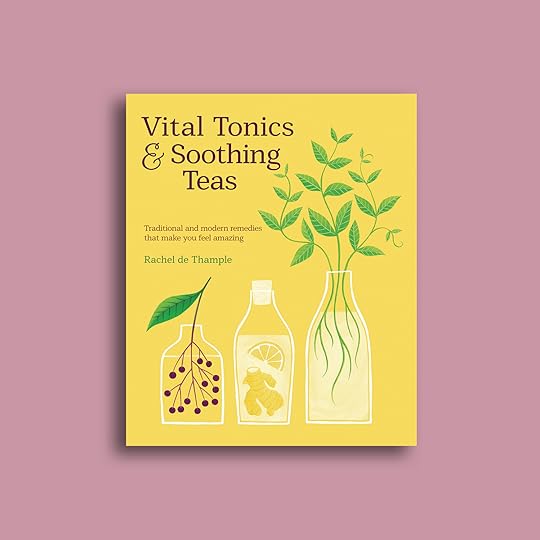
Everyone knows that chamomile tea is the answer to a good night’s sleep and that ginger tea can settle your stomach. But did you know that Jamu Kunyit, a ginger and turmeric tonic, is the Balinese equivalent of “an apple a day” to “keep health problems at bay”; that herbal medicinal vinegars can be antifungal, antibacterial, and antiviral as well as helping fight respiratory infections, coughs, and bronchitis; or that adding black pepper and coconut oil to any turmeric drink can help your body reap the benefits more effectively? In Vital Tonics & Soothing Teas: Traditional and Modern Remedies[image error], Rachel de Thample has gathered a collection of the best of these ancient drinks and traditional remedies, along with a few modern spins, offering tips on how to best build them into a busy lifestyle.
Buy it on Amazon >> Vital Tonics & Soothing Teas: Traditional and Modern Remedies[image error]
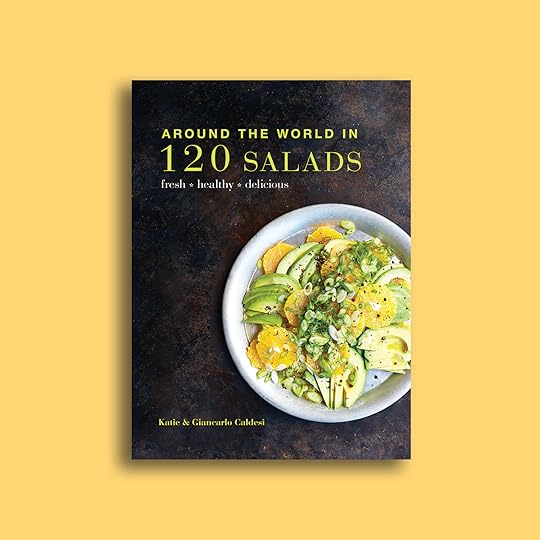
With a selection of essential dressings to complement any salad, this mouthwatering collection of inspirational recipes from Around the World in 120 Salads: Fresh Healthy Delicious[image error] by Katie and Giancarlo Caldesi will ensure you’ll never be stuck with a limp leaf of iceberg lettuce ever again.
Buy it on Amazon >> Around the World in 120 Salads: Fresh Healthy Delicious[image error]
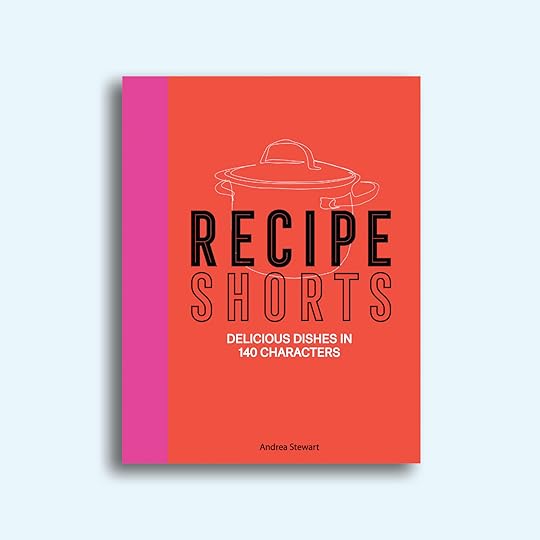
RecipeShorts: Delicious dishes in 140 characters[image error] brings new ideas into your kitchen, showing just how easy cooking can be. Every recipe is written within 140 characters; they are short and simple, but bursting with flavor – using a few ingredients that together create stunning results. You will be amazed how much information can be conveyed in so few words. Whether you are cooking for one, two, or a crowd, getting delicious food on the table has never been so hassle-free.
Buy it on Amazon >> RecipeShorts: Delicious dishes in 140 characters[image error]
In Jello Shots: Over 30 Recipes to Get the Party Started[image error], Sabrina Fauda-Role shares over 30 inventive recipes to get the party started. Make your favorite cocktails even better with Mojito, Cosmopolitan, and Long Island Iced Tea jello shots. Not only do the shots taste great, they are also beautifully presented – try a Bloody Mary in a hollowed-out tomato, or create a stunning Tequila Sunrise. You can even add a bit of extra fizz with the Gin & Tonic and Sparkling Wine shots. They can be mixed up in minutes, then just leave to set in the fridge for a few hours before your guests arrive. Jello has never been so much fun!
Buy it on Amazon >> Jello Shots: Over 30 Recipes to Get the Party Started[image error]
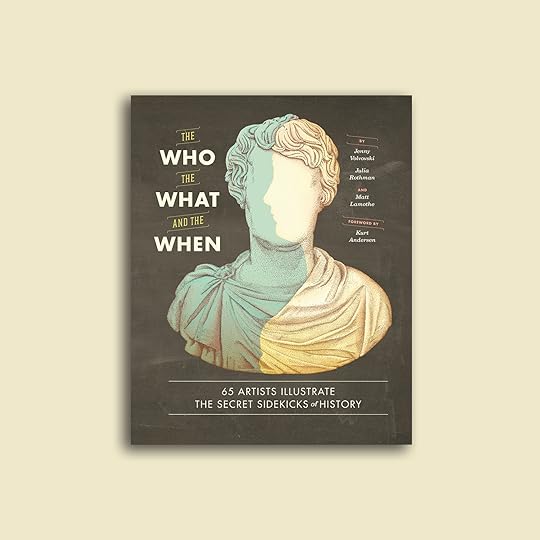
This offbeat illustrated history reveals 65 people you’ve probably never heard of, but who helped shape the word as we know it. Muses and neighbors, friends and relatives, accomplices and benefactors—such as Michael and Joy Brown, who gifted Harper Lee a year’s worth of wages to help her write To Kill a Mockingbird. Or John Ordway, the colleague who walked with Lewis and Clark every step of the way. Each eye-opening story of these unsung heroes is written by a notable historian and illustrated by a top indie artist, making The Who, the What, and the When: 65 Artists Illustrate the Secret Sidekicks of History[image error] a treasure trove of word and image for history buffs, art lovers, and anyone who rejoices in unexpected discovery.
Buy it on Amazon >> The Who, the What, and the When: 65 Artists Illustrate the Secret Sidekicks of History[image error]
The post B.1802 Reading List | March 2018 appeared first on Beekman 1802.
March 30, 2018
18(02) Facts about Spring
Did you know that we have used the word “spring” for the season since the 16th century; before that it was used to reference the source of a river/body of water.
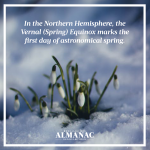




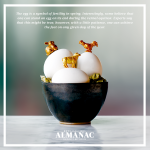
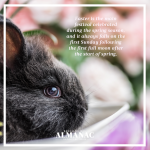



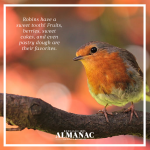






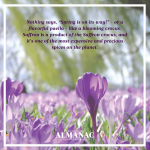
And we wouldn’t be 1802 if we didn’t give you 18 + 02…

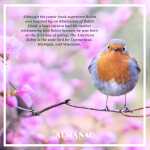

1
Spring 2017 Almanac

2
Summer 2017 Almanac

3
Autumn 2017 Almanac

4
Winter 2017 Almanac
Visit the Mercantile
The post 18(02) Facts about Spring appeared first on Beekman 1802.
18 Facts about Spring
Did you know that we have used the word “spring” for the season since the 16th century; before that it was used to reference the source of a river/body of water.


















And we wouldn’t be 1802 if we didn’t give you 18 + 02…



1
Spring 2017 Almanac

2
Summer 2017 Almanac

3
Autumn 2017 Almanac

4
Winter 2017 Almanac
Visit the Mercantile
The post 18 Facts about Spring appeared first on Beekman 1802.
March 26, 2018
Taking Oatmeal Off the Table & Onto Your Skin.
While there are plenty of interesting ways to serve oatmeal in the morning, this breakfast superfood also boasts a ton of beauty benefits too!
Our Honey & Oats Soap Bar was one of the first bars we made, and is still one of our bestsellers. The use of oats in skincare has been documented as far back as 2000 B.C., and oatmeal is one of the few natural ingredients to receive recognition from the Food and Drug Administration (FDA). But the Ancient Egyptians didn’t need the FDA. They were among the first to recognize the skin-soothing properties of oats to heal skin problems because it relieves dry skin, itchy skin, bug bites, sunburn, rashes and more. But how does it work?
Colloidal Oatmeal – What is it?
Before we dive into the good stuff, let’s discuss the nitty gritty: sure, oats boast plenty of beauty benefits, but colloidal oatmeal is full of vitamins, minerals, and lipids that add moisture to benefit the skin’s condition. Colloidal oatmeal refers to oats that are finely milled and then suspended in water, gel, or other liquids like honey, oils, yogurt, or lotion, where it disperses evenly, allowing it to be absorbed easily by the skin. You can buy colloidal oatmeal pre-made, or you can pick up some organic old fashioned oatmeal and grind it up with a blender or food processor into a very fine powder (more on that in a minute).

Oatmeal and it’s superfine grinds are nutrient-rich for the skin, especially suitable for those with sensitive, easily irritated complexions. Because oatmeal is one of the ingredients least likely to cause a reaction, it’s a wonderful way to care for sensitive skin, or just help boost your everyday glow.
Helps Defend the Skin
Oats contain polysaccharides (think carbohydrates like starch, cellulose, or glycogen), whose molecules consist of a number of sugar molecules bonded together and have a gel-like texture when combined with moisture. This light gel leaves a protective layer over the skin that seals in its natural moisture while also providing additional nutrients. For many with sensitive skin, the skin barrier function may be compromised, and a layer of colloidal oatmeal acts like a protective, second skin. The proteins in oats also improve the skin barrier’s functionality by increasing the production of filaggrin, an essential building block of the skin barrier’s function.
Hydrates Dry Skin
The protective layer colloidal oatmeal imparts over the skin’s surface helps retain its natural moisture, while other actives help replenish moisture levels. The starches in oats are able to absorb water and bind it to the skin, resulting in a healthy complexion and glow.
Evens Out Skin Tone and Texture
Oats are also a rich source of avenanthramides, a unique group of antioxidant compounds not found in other plant sources. Avenanthramides are the main actives in oats that reduce redness and inflammation, especially irritation from excessive sun exposure (UV radiation).
Natural, Gentle Cleansing
Oats contain saponins, compounds that are naturally occurring in many grains and legumes. Saponins are an ideal, gentle cleanser for sensitive skin because they absorb dirt and debris on the surface of the skin. As a result, dirt can be easily rinsed away without disrupting the skin’s barrier.
Anti-Acne Ingredient
Oatmeal contains zinc, which is one of the best go-to mineral for acne sufferers. When used topically, zinc is knowns to fight off acne causing germs, control sebum secretion (oil from the glands), and even heal acne scars. Oatmeal contains B-vitamins and selenium, which ward off pore-blocking free radicals that may contribute to acne. Furthermore, oatmeal’s soothing anti-inflammatory properties calm inflammation caused by acne.
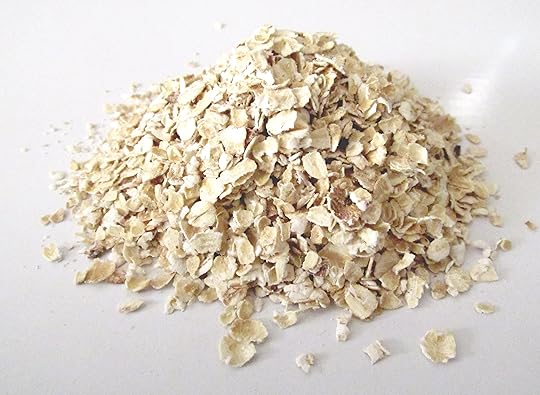
Soothe Move
Soaking in an oatmeal bath to soothe chicken pox, poison ivy, or burns isn’t merely an old wives tale – it really works! Since ancient times, Egyptians used oatmeal in their baths for soothing skin; later on, the Greeks and Romans adopted this practice, which is proven to be beneficial in calming redness, itchiness, and mild burns.
Dry Shampoo
Ground oatmeal serves as an excellent ingredient for a homemade dry shampoo, too. Grind whole oats into a fine powder and rub it all over your scalp to soak up excess oils and keep your hair feeling clean. For the blonde bombshells out there, oatmeal powder can be used as a stand alone ingredient. For luscious brunettes, mix your ground oatmeal with raw cacao powder before applying. Make sure to brush off excess oat particles using a brush or wooden comb.
Lastly, as promised, if you wish to make your own magic dust colloidal oatmeal to add to baths or to your skincare ritual, it’s simple to make at home. You’ll need:
A food processor, spice grinder, coffee mill, or mortar and pestle. If you have very sensitive skin, we recommend using a separate blender kept only for at-home skincare, because trace amounts of spices and coffee may irritate the skin.
Whole rolled oats (do not use instant or flavored oatmeal)
An airtight container for storage.
Mill the oats into a soft, fluffy powder. Keep the colloidal oatmeal in an airtight container in a cool pantry so the actives stay fresh. From there, the sky’s the limit: make yourself an oatmeal bath, scalp treatment, face mask, body lotion, or dry shampoo to reap the benefits of these awesome oats.
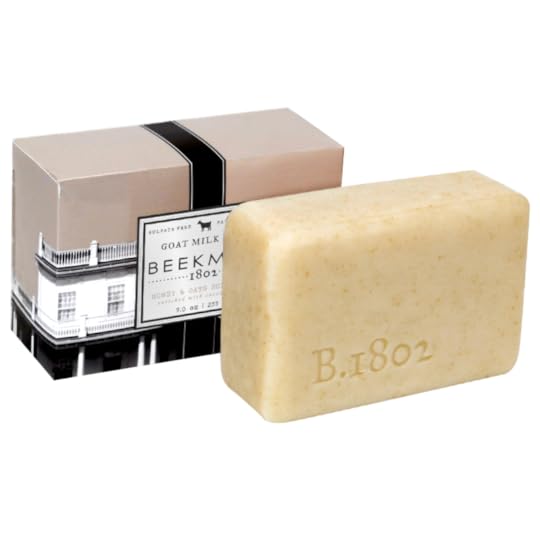
1
Honey & Oats Goat Milk Scrub Bar
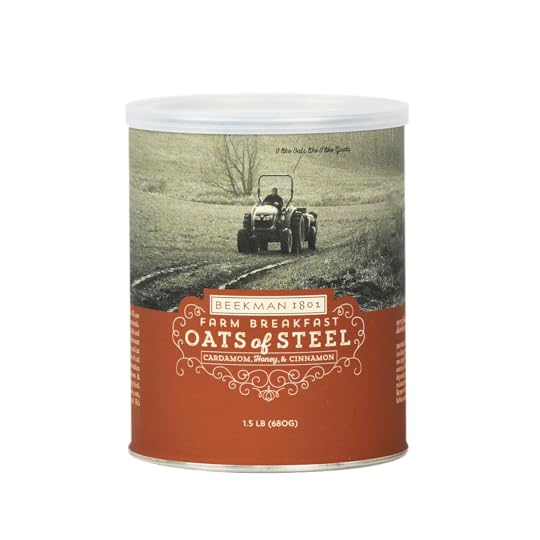
2
Oats of Steel
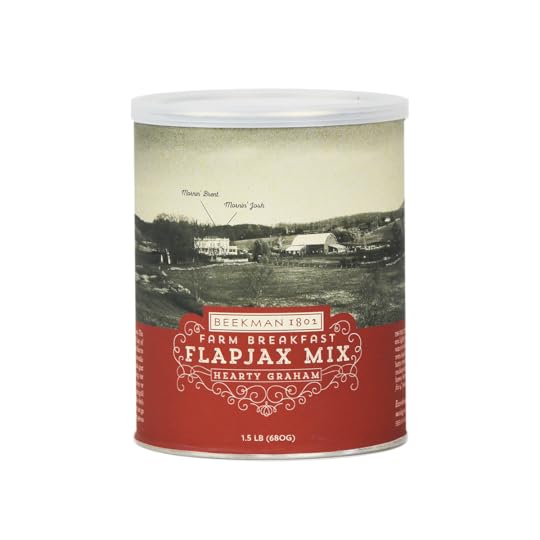
3
Flapjax
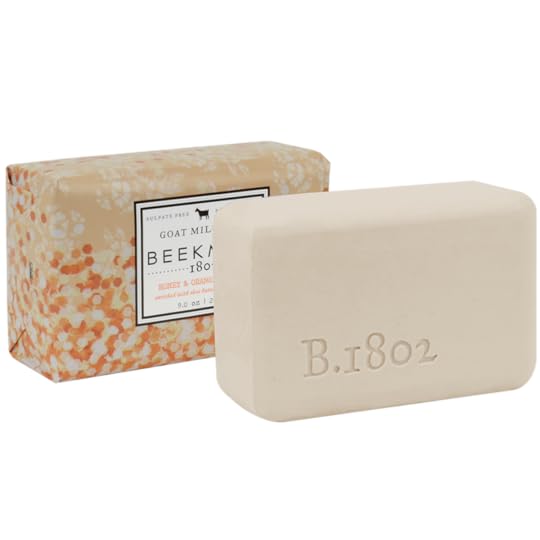
4
Honey & Orange Blossom Goat Milk Bar
Visit the Mercantile
The post Taking Oatmeal Off the Table & Onto Your Skin. appeared first on Beekman 1802.
Easter Trivia – Which Came First, the Bunny or the Egg?
Easter is Josh’s favorite holiday. Always has been. While he enjoys going to church (Easter Hymns are his favorite of the year,) he mostly enjoys the day because…well…when you really think about it, it has some of the funniest, most absurd traditions of any holiday. Bunnies bearing baskets. Beans made of jelly. Brightly colored eggs hidden around the house and yard. Santa seems downright boring by comparison.
At Beekman, we always love to discover the story behind the stories, so we decided to research a bit more about some of these strange Easter traditions.
The first recorded celebration of Easter was back in the second century, but it probably goes back even further than that. According to one popular theory, early Christians adopted Easter from a pagan festival celebrating Eostre, the Anglo-Saxon goddess of spring and fertility. The goddess consorted with a hare which, as the theory goes, was the original inspiration for today’s Easter Bunny. But it appears that little evidence exists to support this story so, where did the Easter Bunny actually come from?
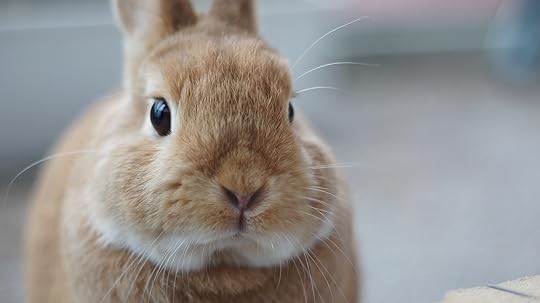
Rabbits are an ancient symbol of fertility and new life, two ideas strongly associated with spring Easter. The connection between rabbits and Easter arose in Protestant Europe in the 17th century, and was probably brought to America a century later by German immigrants. Many German farmers settled the lands here in Upstate New York’s Schoharie Valley, so it’s quite possible that many of the early-American Easter traditions started right here in our own backyard!
But the Easter Bunny isn’t the only animal associated with the holiday. In Switzerland, a Cuckoo delivers the Easter eggs, while in different parts of Germany, kids wait for the Easter fox, chick, rooster, or stork. Sadly, it doesn’t seem like there’s any tradition of an Easter Goat. We’ll start working on that.
While eggs also symbolize fertility and renewal, they may have become popular on Easter for a more practical reason. For centuries, the Christian church banned eggs, along with other foods during Lent, and it became a special treat to eat them again at Easter. Decorating eggs is one of the oldest and most lavish Easter customs, and traditions developed in late 19th century Russia when royalty and other members of high society began giving each other jewel-encrusted eggs as Easter gifts. The man behind these insanely valuable eggs was the artist, jeweler, goldsmith Peter Carl Fabergé, who was commissioned by Czar Alexander III to create jeweled Easter eggs for his wife. Guess which eggs we won’t be hiding during this year’s Easter egg hunt? (hint: any encrusted in precious jewels)
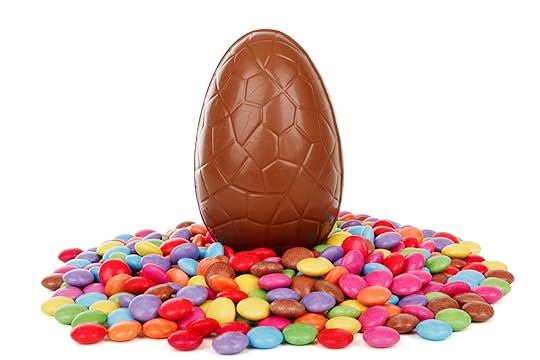
For most American kids, however, Easter is really all about the sweet stuff…. CANDY! U.S. candymakers produce 90 million chocolate bunnies, and 16 billion jelly beans for Easter each year. (We bet there’s probably, like, 1 billion black jelly beans thrown away each year too.) Jelly beans were invented in the 17th century, but they only became an Easter candy in the 1930s after merchants pointed out how much they looked like mini Easter eggs. Today, more candy is sold for Easter than any other holiday, except for Halloween, and nearly 90% of American parents prepare Easter baskets for their kids.
From everyone at Beekman 1802, including the Easter Goat (let’s see if we can make that stick,) we wish you peace, love, and happiness this spring.
The post Easter Trivia – Which Came First, the Bunny or the Egg? appeared first on Beekman 1802.
March 25, 2018
DIY Silhouette Easter Eggs
Silhouettes in art dates back prior to the 17th century although it gained its name and popularity during the 18th century. Create silhouettes of your dinner guests and use the finished eggs as their place cards.
Materials
Hard boiled eggs
Colored dye
Silhouette shapes
x-acto knife or scissors
Contact paper
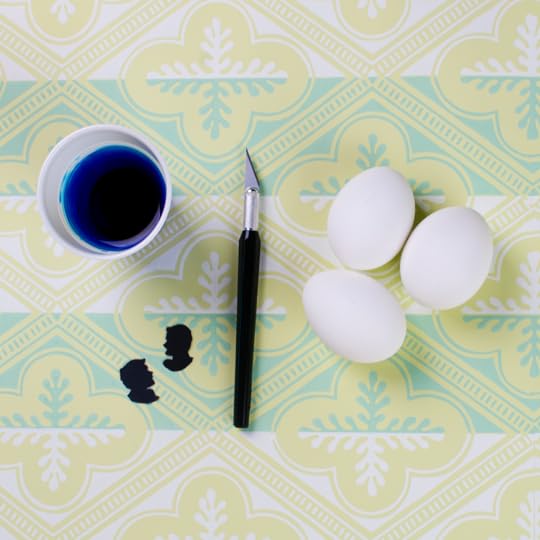
Start by tracing the silhouette shapes onto the contact paper. Then using an x-acto knife or scissors, cut the shapes out.
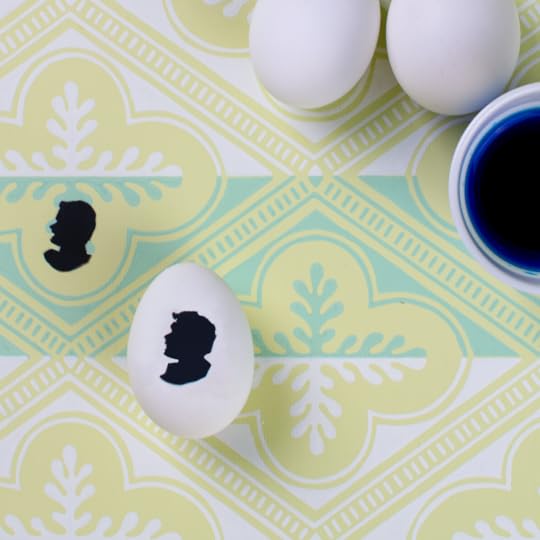
Next, peel off the back of the contact paper and stick the silhouettes onto the eggs. Burnish the edges with your thumb, to keep the dye from penetrating.
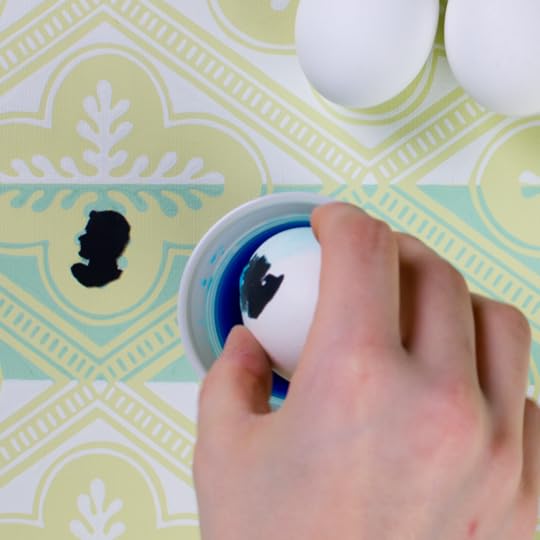
Dip the eggs into the dye, allowing them to sit for a couple of minutes.
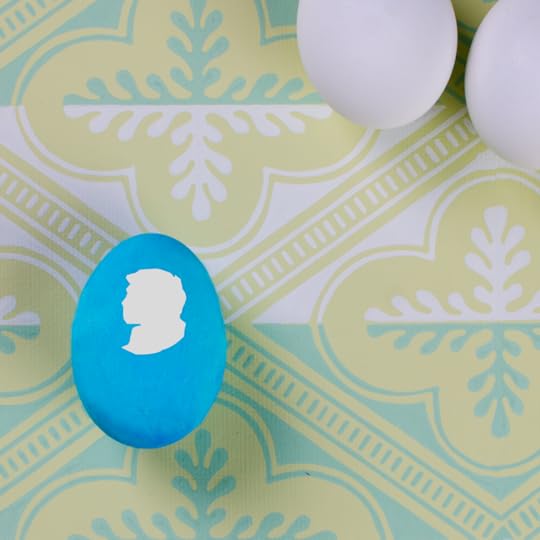
Remove the eggs from the dye and allow it to dry.
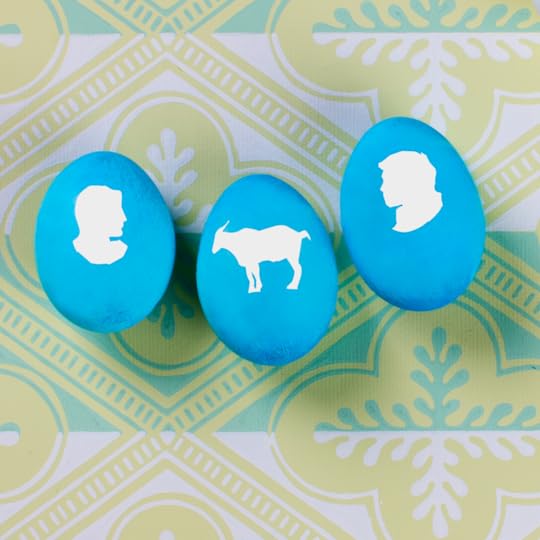
Peel the silhouettes off of the eggs to reveal the silhouettes.
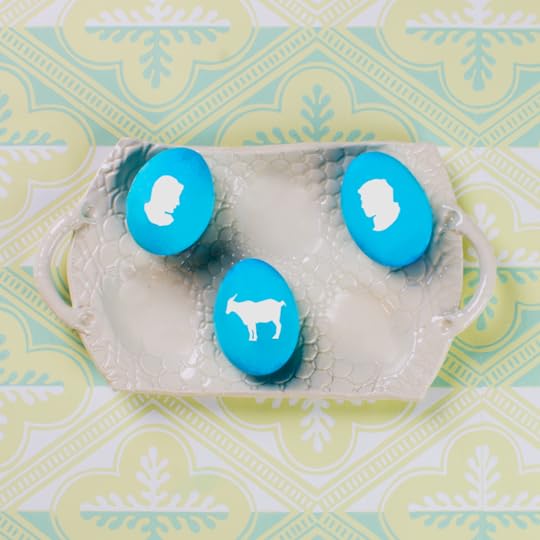
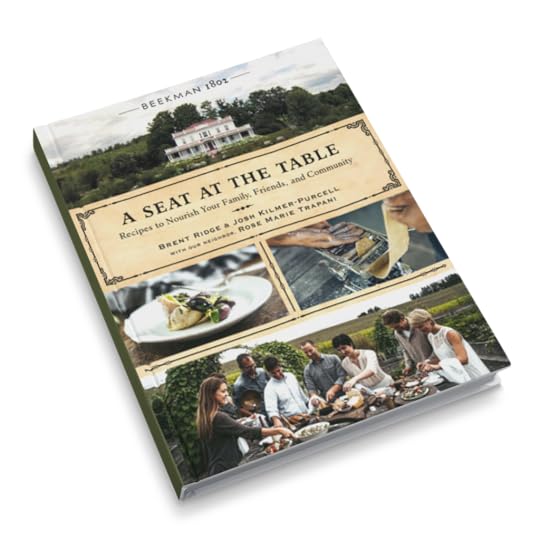
1
A Seat at The Table

2
Heirloom Vegetable
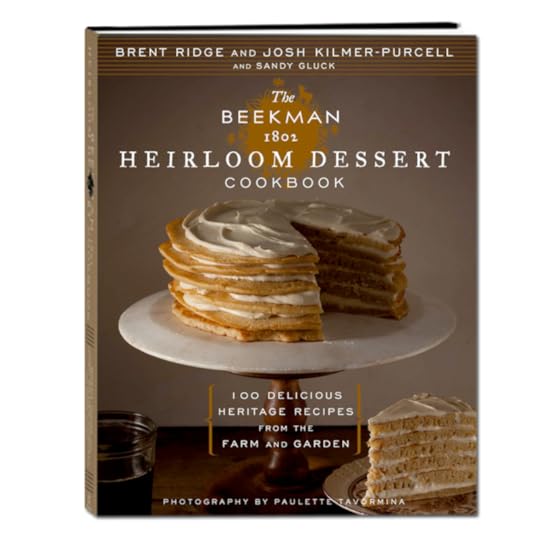
3
Heirloom Dessert

4
Heirloom Cookbook
Visit the Mercantile
The post DIY Silhouette Easter Eggs appeared first on Beekman 1802.
March 17, 2018
5 Beautiful Things – Easter Eggs

Exceptional Eggs
As Easter gifts go, one cannot get more extravagant than a pair of Fabergé eggs. Each year at Easter Czar Nicholas II of Russia commissioned his Imperial goldsmith, Peter Carl Fabergé, to design two elaborate Easter eggs to give as gifts: one to bestow upon his wife and one to give to his mother. Between 1880 and 1917 there were more than 60 decorative eggs created by Fabergé; 54 of those were the result of the Czar’s imperial commission.
Fabergé worked with dozens of his craftsmen to design and create unique eggs that would surprise and delight the Imperial Family each year at Easter. The commission gave Fabergé and his team the freedom to ignore questions of cost and time and to concentrate on the challenge of creating something new and unimagined for his patrons. The resulting artworks are proof that Fabergé met that challenge and far exceeded any expectations.
The eggs were made of the most precious materials available (porcelain, enamal, gold) and then encrusted with sapphires, rubies, diamonds, emeralds and crystals. The eggs often included hand-painted details and mechanical elements, such as inset time pieces or moveable parts that opened secret compartments or uncovered surprising stowaways: one egg opened to reveal a solid gold miniature replica of the Imperial carriage, completely studded with diamonds.
That such excess was encouraged by the Czar at a time when more than half of Russia was starving is unsettling, to say the least. However, the craftsmanship and artistry demonstrated by Fabergé and his team in creating these unsurpassed treasures must be regarded today as gifts to the entire world. They are among the most beautiful testaments to the art of handmade design and craftsmanship.
Their actual cost is inestimable and after the revolution, the eggs were dispersed throughout the world, ending up in museums and private collections. The last Fabergé egg to see the inside of an auction house fetched more than $16-million. Russian billionaire Viktor Vekselberg paid more than $100-million for a series of nine Fabergé eggs. The Queen of England owns several examples and the Kremlin Armoury has ten of the eggs in its collection. The others reside in museums throughout Europe and America and numerous, individual examples can be found in private collections. Below are five examples of Fabergé eggs.


1
Beekman Flapjax Mix
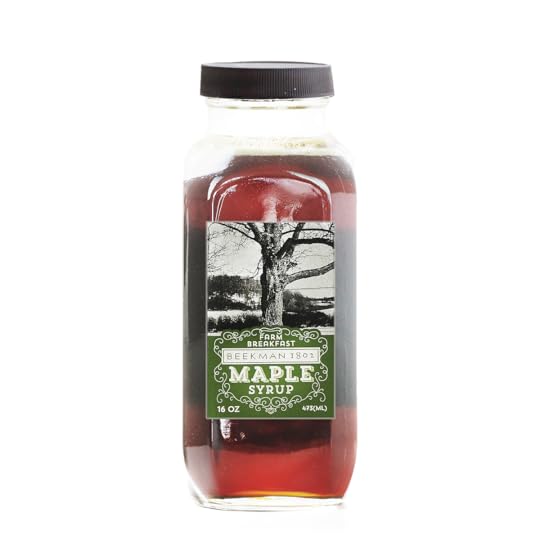
2
Beekman 1802 Maple Syrup
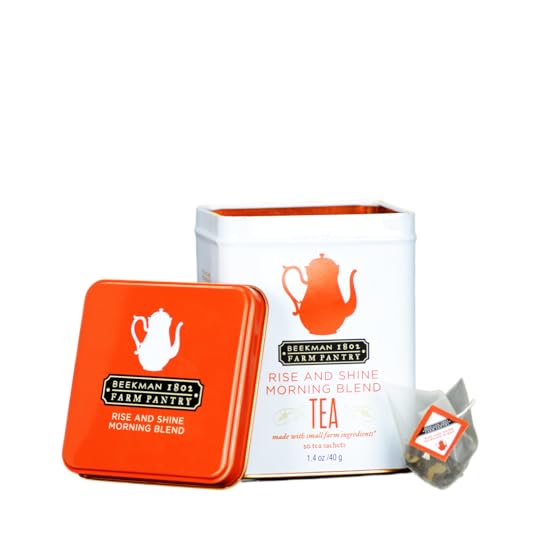
3
Rise & Shine Breakfast Blend Tea
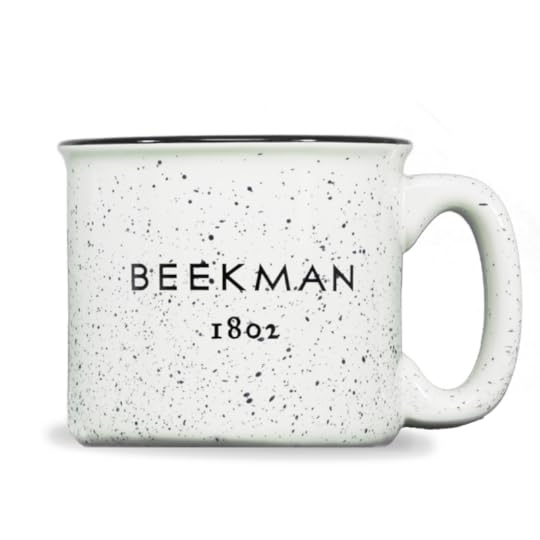
4
"Enamelware" Ceramic Mug
Visit the Mercantile
The post 5 Beautiful Things – Easter Eggs appeared first on Beekman 1802.



